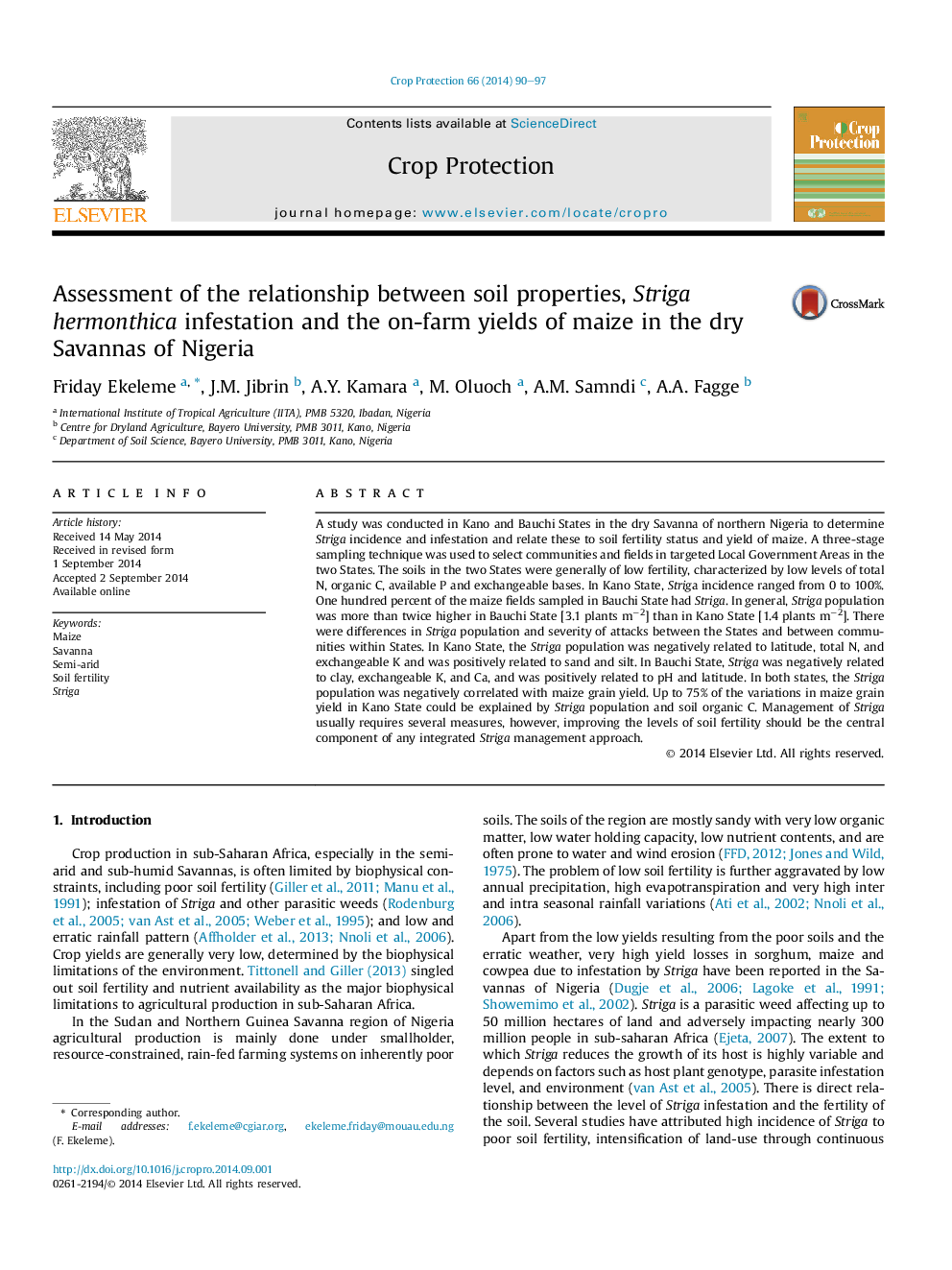| Article ID | Journal | Published Year | Pages | File Type |
|---|---|---|---|---|
| 6373709 | Crop Protection | 2014 | 8 Pages |
Abstract
A study was conducted in Kano and Bauchi States in the dry Savanna of northern Nigeria to determine Striga incidence and infestation and relate these to soil fertility status and yield of maize. A three-stage sampling technique was used to select communities and fields in targeted Local Government Areas in the two States. The soils in the two States were generally of low fertility, characterized by low levels of total N, organic C, available P and exchangeable bases. In Kano State, Striga incidence ranged from 0 to 100%. One hundred percent of the maize fields sampled in Bauchi State had Striga. In general, Striga population was more than twice higher in Bauchi State [3.1 plants mâ2] than in Kano State [1.4 plants mâ2]. There were differences in Striga population and severity of attacks between the States and between communities within States. In Kano State, the Striga population was negatively related to latitude, total N, and exchangeable K and was positively related to sand and silt. In Bauchi State, Striga was negatively related to clay, exchangeable K, and Ca, and was positively related to pH and latitude. In both states, the Striga population was negatively correlated with maize grain yield. Up to 75% of the variations in maize grain yield in Kano State could be explained by Striga population and soil organic C. Management of Striga usually requires several measures, however, improving the levels of soil fertility should be the central component of any integrated Striga management approach.
Related Topics
Life Sciences
Agricultural and Biological Sciences
Agronomy and Crop Science
Authors
Friday Ekeleme, J.M. Jibrin, A.Y. Kamara, M. Oluoch, A.M. Samndi, A.A. Fagge,
